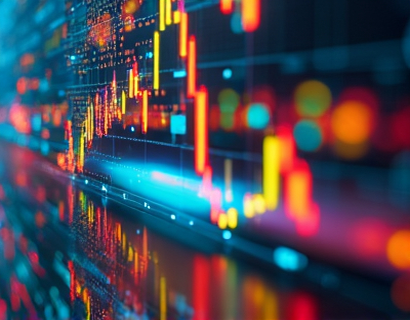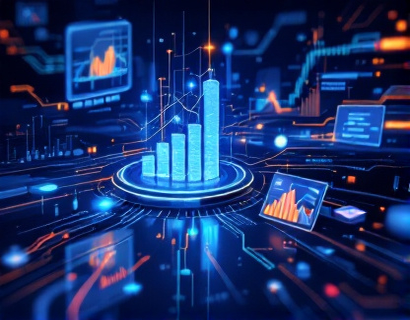Unlock Your Artistic Potential: Exploring the Digital Frontier for Creatives and Collectors
The digital age has revolutionized the way artists showcase and sell their work, breaking down geographical barriers and connecting creators with a global audience. This transformation has given rise to innovative online platforms designed specifically for artists to display and monetize their unique creations, whether physical or digital. These platforms serve as a bridge between talented artists and passionate collectors, offering a streamlined and efficient process for both buying and selling exclusive art pieces. This article delves into the benefits and opportunities these platforms provide, focusing on how they can elevate an artist's career and enrich the lives of art enthusiasts.
The Evolution of Art Sales in the Digital Age
Traditionally, artists relied on galleries, exhibitions, and word of mouth to reach potential buyers. However, the internet has democratized the art market, allowing artists to reach a broader audience with minimal barriers. Online platforms have emerged as the new galleries, providing a space where artists can upload their work, set prices, and manage sales directly. These platforms cater to various art forms, including paintings, sculptures, photographs, digital art, and more, making it easier for artists to diversify their portfolio and reach different segments of the art-loving community.
Benefits for Artists
One of the most significant advantages of using these digital platforms is the direct connection with collectors. Artists retain more control over their work, from pricing to sales, without the need to compromise on percentages to galleries or intermediaries. This direct relationship also allows for better communication and understanding between the creator and the buyer, fostering a deeper appreciation for the artwork and its context.
Moreover, these platforms often provide artists with valuable analytics and insights into their sales and viewer engagement. This data can help artists understand their audience better, refine their marketing strategies, and create more pieces that resonate with their target market. The ability to track performance and adjust tactics accordingly is a powerful tool for artistic growth and commercial success.
Opportunities for Collectors
For collectors, these platforms offer an unparalleled opportunity to discover unique and high-quality artworks from around the world. The variety and diversity of art available online far exceed what is typically found in local galleries or art fairs. Collectors can explore different styles, periods, and mediums, finding pieces that align with their tastes and investment goals.
Additionally, the transparency and ease of transaction on these platforms make the buying process more accessible and convenient. Collectors can research artists, read reviews, and view high-quality images or even virtual reality previews of the artworks before making a purchase. This level of access and information empowers collectors to make informed decisions, enhancing their overall experience.
Creating a Vibrant Community
Beyond the transactional aspects, these platforms foster a vibrant community of artists and collectors. Forums, social features, and event spaces allow users to connect, share ideas, and collaborate. This community aspect is invaluable for emerging artists seeking feedback, mentorship, and support. It also provides a space for established artists to stay relevant and engaged with the art world.
Collectors, too, benefit from being part of a community where they can share their passion, learn from others, and participate in discussions about art trends and investments. This sense of belonging and shared interest enriches the overall experience, making the platform more than just a marketplace but a hub of artistic culture and exchange.
Showcasing Unique and Exclusive Artworks
One of the key features of these platforms is the emphasis on uniqueness and exclusivity. Whether an artist creates one-of-a-kind physical pieces or digital art that exists only in the virtual realm, these platforms provide a stage for such works to shine. The focus on uniqueness appeals to collectors looking for rare and distinctive additions to their collections, while artists gain recognition for their originality and skill.
Physical artworks, such as paintings, sculptures, and prints, offer tactile and visual experiences that digital media cannot replicate. These pieces can command high prices and are often sought after by serious collectors. Digital art, on the other hand, opens up new possibilities, including interactive and dynamic pieces that push the boundaries of traditional art forms. Both types of artworks find a welcoming audience on these platforms, ensuring that artists can showcase their full creative range.
Technological Innovations in Art Presentation
The use of advanced technologies such as high-resolution imaging, 3D modeling, and virtual reality enhances the way artworks are presented online. High-quality images and detailed descriptions help collectors visualize the artworks in their own spaces, while 3D models and virtual tours provide an immersive experience. These technological tools bridge the gap between the physical and digital worlds, making the online art experience as engaging and authentic as possible.
For artists, these technologies offer new ways to present and sell their work. Digital art, for instance, can be showcased in interactive galleries or as part of virtual exhibitions, reaching audiences who might not have access to physical galleries. The use of blockchain and NFTs (Non-Fungible Tokens) for digital art ensures ownership and authenticity, providing a secure and innovative way to buy, sell, and own digital creations.
Marketing and Visibility
For artists looking to expand their reach, these platforms offer robust marketing tools and strategies. SEO optimization, social media integration, and promotional features help increase visibility and attract more viewers to their work. Artists can leverage the platform's existing audience, participate in featured artist spots, and engage in collaborative projects to boost their exposure.
Collectors, too, can benefit from the platform's marketing tools by following their favorite artists, receiving notifications about new uploads, and participating in community-driven promotions. The platform's algorithms often highlight popular and trending artworks, increasing the chances of discovering new favorites and supporting emerging talent.
Supporting Sustainable Careers
By providing a direct and fair marketplace, these platforms play a crucial role in supporting sustainable careers for artists. The ability to sell artworks directly to collectors eliminates the need for middlemen, allowing artists to retain more of the revenue. This direct sales model, combined with the potential for repeat sales and the building of a loyal collector base, can lead to a more stable and profitable artistic career.
For collectors, investing in emerging artists through these platforms can be a rewarding experience. By supporting artists early in their careers, collectors can acquire unique pieces at more affordable prices and witness the growth and success of these creators. This symbiotic relationship benefits both parties, fostering a thriving and sustainable art ecosystem.
Conclusion
The integration of digital platforms into the art world has opened up new avenues for artists and collectors alike. These platforms not only provide a space for showcasing and selling unique artworks but also foster a community that values creativity, innovation, and authenticity. By embracing these tools, artists can expand their reach and build successful careers, while collectors can enrich their collections with exceptional pieces. The future of art is digital, and those who embrace this evolution will find endless opportunities for growth and inspiration.











































